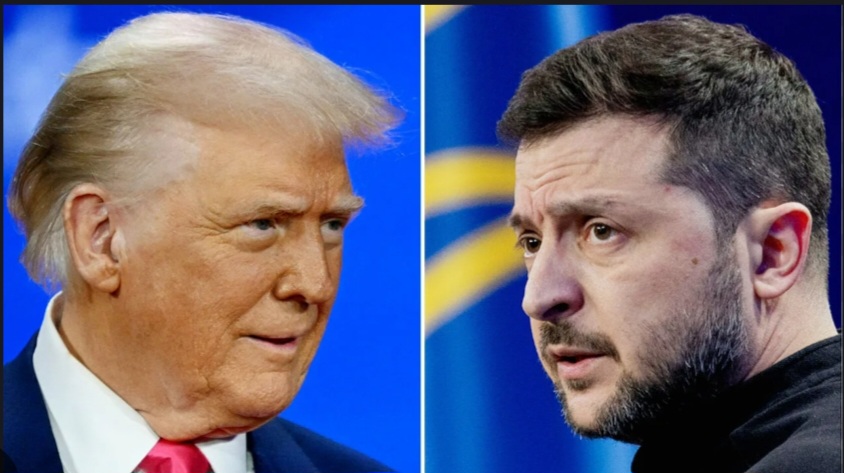
Temitayo Olumofe
U.S. President Donald Trump has set an ultimatum for Ukraine to accept a 28-point peace plan aimed at ending the ongoing Russia-Ukraine war by November 27, 2025. Crafted with input from both U.S. and Russian officials, the plan calls for Ukraine to make significant territorial concessions and to renounce NATO membership—a move that has sparked intense debate and divergent reactions worldwide.
On November 21, Trump officially announced the deadline for Ukraine to accept the peace proposal put forth by his administration. The plan outlines broad terms including Ukraine relinquishing parts of the eastern Donbas region and Crimea to Russia, and making constitutional pledges not to join NATO. Trump emphasized the urgency, saying November 27 was an “appropriate time” for decisions, though he hinted the deadline could be extended if negotiations showed progress. He described the plan as a “realistic path to peace” and suggested cooperation with European partners to make peace achievable. However, Trump warned that if Ukrainian President Volodymyr Zelenskyy rejected the deal, Ukraine would risk losing continued U.S. support to fight the conflict on its own terms.
President Zelenskyy responded cautiously, stating Ukraine was willing to work with the U.S. and Europe “at the level of national security advisors” to explore viable peace paths but did not fully endorse the plan publicly. Ukrainian citizens, particularly those from conflict-affected regions, expressed strong opposition and skepticism. A widow of a Ukrainian soldier described the plan as “not a peace plan; it is a plan to prolong the war,” reflecting widespread fears that the proposal disproportionately favors Russian interests and undermines Ukrainian sovereignty.
Criticism and International Reactions
The Trump administration’s peace plan faced substantial criticism from U.S. lawmakers across party lines and European officials. Many saw the plan as heavily skewed toward appeasing Russia, rewarding Moscow’s aggression rather than securing Ukraine’s sovereignty. Bipartisan Congressional figures called the plan an unacceptable “surrender and capitulation.” Republican Senator Mitch McConnell called it a plan that rewards “Russian butchery,” while Democrat Senator Jeanne Shaheen labeled it a “Putin plan for Ukraine.”
European leaders also voiced concern, noting limited consultation in developing the plan. Analysts warned that imposing territorial concessions without adequate protections risks destabilizing the region further. Russian President Vladimir Putin appeared to welcome the plan, describing it as an updated version of prior proposals discussed with Trump and reflecting Moscow’s interest in consolidating its territorial hold.
The plan mandates Ukraine to cede control over the eastern Donbas region and Crimea territories seized by Russia since 2014, limit the size and capabilities of Ukraine’s military, and ban future NATO membership, significant setbacks for Kyiv’s strategic position. The deal includes limited security guarantees for Ukraine, relying mainly on coordinated Western responses only after future Russian aggressions, without robust measures against ongoing threats like cyberattacks or sabotage.
The timing of the November 27 deadline, coinciding with the U.S. Thanksgiving holiday, adds intense diplomatic pressure with little room for comprehensive deliberation, raising questions about the sincerity and flexibility of negotiations.
Ukraine stands at a crossroads, facing a tough choice between accepting a peace deal that compromises its territorial integrity or risking ongoing conflict with diminishing international support. The White House underscores impatience with prolonged war, but critics point to heavy diplomatic and human costs. Supporters argue ending the war sooner could save lives and stabilize the region, while opponents warn that compromising core Ukrainian sovereignty could embolden further aggression and weaken Eastern European security architecture.
The Trump administration’s approach, while framed as pragmatic, risks alienating Ukraine from Western allies by underestimating the deep-rooted Ukrainian resistance to a deal seen as favoring Kremlin interests. President Zelenskyy’s government is navigating this treacherous path cautiously, seeking terms that alleviate conflict without sacrificing core national interests.
Navigating Sovereignty
Is the peace deal realistic, or is Trump’s ultimatum the real solution? The plan demands significant territorial concessions and renunciation of NATO membership, which are core elements of Ukraine’s sovereignty and security. Such conditions risk undermining Ukraine’s independence and dignity, forcing a peace that disproportionately favors Russian geopolitical interests. Peace that sacrifices territory and security guarantees may expose Ukraine to future vulnerabilities rather than stability.
The strict deadline, coinciding with a major U.S. holiday, seems politically motivated, limiting thorough diplomatic engagement. Ukraine’s voice and interests must remain central in negotiations, with allies providing security guarantees and reconstruction aid rather than pressuring Kyiv into perceived capitulation.
Developments before the deadline will determine whether the peace plan leads to a historic breakthrough or another faltering step in a complex conflict. The international community watches closely as Ukraine balances immediate peace desires against long-term sovereignty and security concerns. The outcome will define Eastern Europe’s geopolitical landscape for decades, testing Ukraine’s leadership, people, and the unity of its allies worldwide.
